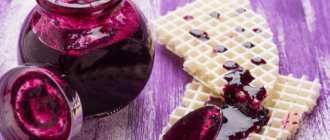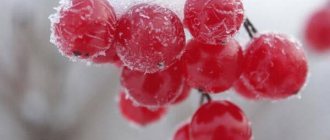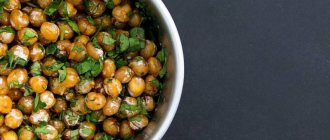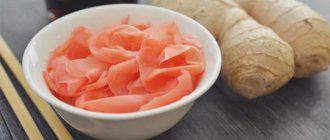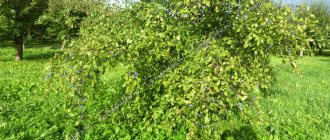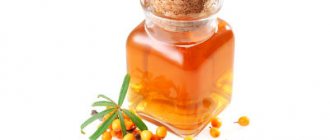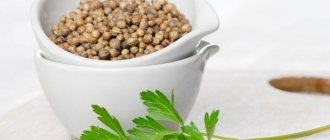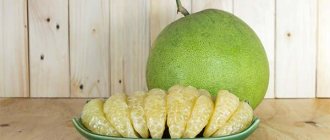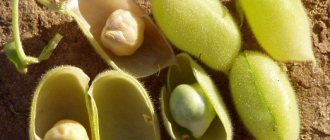Description of the plant
It is a shrub from the genus Barberry. An evergreen plant with many flowers and fruits.
The plant's constituents are widely used in the culinary industry.
The leaves are used in preparing marinades and canning vegetables. Suitable as one of the components of salads.
The fruits complement the taste of confectionery products: candies, marshmallows, marmalade, jelly, baking syrups.
Dried berries are added to pilaf, soups and broths. In the countries of Central Asia, cooking barbecue is not complete without adding them.
Through thorns to recovery
When harvesting barberry, candidate of biological sciences Valeria Sotnik (and for you and me, just Grandma Maklyura) arms herself with pruning shears, laying a piece of tarpaulin under the thorny bushes, onto which the tart-sour berries fall. Unlike leaves (they are harvested in May-June), barberry fruits are harvested right now, in late autumn. Some of the fruits are used to prepare medicinal tinctures, and some are used for seeds, which should be planted in the ground at this time, before winter. And so that they don’t get lost in the beds, Valeria Fatikhovna sows them in a box, which goes under the snow along with other garden vegetation and winters well, delighting the owner with early shoots and a good harvest.
The leaves, roots, and bark of barberry are suitable for medicinal purposes. Valeria Fatikhovna prefers not to use the bark and roots so as not to destroy the useful perennial shrub. Moreover, barberry berries, which are popularly nicknamed northern lemon for their sour taste, are in no way inferior in their healing properties to the rest of the plant.
Beneficial features
Berries are widely used as folk healers. They are known for their wide range of effects. Thanks to this, they deservedly received a place in the home medicine cabinet.
Key Features:
- Calming effect. The fruit drink stabilizes the functioning of the central nervous system and reduces stress.
- Restoring the natural functioning of the gastrointestinal tract. Helps with diseases of the digestive system.
- Separately, it should be noted the effect of fruits on the liver. They are an indispensable assistant in liver enlargement, treatment of jaundice, hepatitis.
- Choleretic effect. Regular consumption of berry infusions helps to dilute bile and its natural functioning. An indispensable remedy for cholecystitis.
- Regular use helps restore metabolism and improves appetite;
- Removing harmful substances from the body, cleansing the blood and blood vessels.
- Antipyretic effect at elevated body temperature and fever.
- Anti-inflammatory drug for diseases of the respiratory system (sore throat, bronchitis);
- Strengthening the walls of blood vessels, stabilizing the functioning of the cardiac apparatus;
- Normalization of blood pressure;
- Help in the treatment of diseases of the reproductive system. Acceleration of healing processes in the postpartum period.
- Normalizes hormonal levels.
- Used as a diuretic. Helps normalize the natural processes of the genitourinary system.
- The main component in the preparation of facial cleansers. Actively fights acne and other rashes.
- The use of essential oil based on berry extracts helps in getting rid of cellulite deposits, tightens and tones the skin.
How to dry barberry at home
1 way
Sort the berries, rinse, dry, place in one thin layer on a baking sheet, and place in the oven at 50 degrees. After a while, turn over and increase to 65 degrees. Readiness is determined visually.
Method 2
Place the fruits in the shade under a canopy in clear sunny weather, in the breeze. Stir occasionally.
3 way
Leaves from May or early June are dried together with thin twigs in a shaded place; the important condition is not to wash them first and avoid exposure to sunlight.
4 way
Barberry roots, dug up in late autumn, are cleared of soil, placed on sheets of paper and taken to a dark, well-ventilated attic. If there are no conditions for natural drying, cook them in the oven, heating them at a temperature of 46-48 degrees for two and a half to three hours. When viewed from a section, properly dried roots have a pleasant yellow tint.
It is important to store dry plants in canvas, paper bags or wooden containers; they will not lose their medicinal properties for 2 years.
Winter preparations from barberry
In Rus', barberry berries were added to sauerkraut.
At home, pickled and salted barberries are prepared:
- For pickling, you need to take 1.5 kg of clean and dried fruits and pour them into small, dry, sterile jars. Prepare the marinade: add 800 g of sugar to 900 g of apple cider vinegar (preferably homemade), mix well. Add 50 pcs to the mixture. allspice, half a cinnamon stick, broken into small pieces, 50 pcs. cloves and 1 tbsp. l. salt. Bring the marinade to a boil and immediately pour over the barberry. Close with lids.
- To pickle barberries for the winter in late autumn, twigs with ripe fruits are collected, washed, dried and placed in clean small jars with screw-on lids. Boiling brine from 3 glasses of water and 3 tbsp. l. Fill the jars to the top with salt and close the lids. When the containers have cooled, place them in a cool place.
Marinated and salted barberry is served with fried meat and roast.
Juice is made from barberry for the winter, which is used to make ice cream, yogurt, marmalade and sweets. To do this, you need to take ripe berries without damage and grind them in a stone mortar. Strain through a thick, lint-free cloth without squeezing. Pour the juice into special trays for freezing water and place it on the top shelf of the freezer. After freezing, the juice is carefully removed, placed in bags and stored in the freezer.
If there is a lot of barberry on the site, you can make jellies, jams, and preserves from it in different ways. At high temperatures, valuable vitamins in berries are destroyed, so they need to be cooked quickly.
Winter is ARVI season, so vitamin “bombs” should be prepared from berries. The ripened fruits are washed, dried without removing the seeds, crushed in a blender, added sugar 1:1 or honey 1:0.5 and mixed well several times so that the sugar or honey dissolves. The finished fresh jelly is laid out in plastic cups and placed in the freezer.
We recommend that you read Recipes for blackberry tinctures
Barberry can be used to make a blood cleansing liqueur. Take 1 kg of ripe, already soft fruits, wash, dry, pour into a jar with a ground-in lid, add 700 g of sugar and leave to infuse for 14 days in a dark place at room temperature. Then add 1 liter of alcohol to them and keep them in a dark place for 2 weeks. Strain. Take 20 ml as needed.
Barberry jam. After the first frost, you need to collect 1 kg of ripe fruits, wash, sort, tear off the tails, pour into a container and pour 2 glasses of water, add 1 kg of sugar, mix gently. Place on low heat, simmer for 15 minutes and set aside for 2 hours. Then boil for 20 minutes and leave the jam to brew for 4 hours. Repeat this 2 times. Place the mixture into sterile jars with screw-on lids. The prepared jam is good served with mint tea.
Contraindications and harm of barberry
- You should not drink infusions and decoctions with barberry for a long time and increase the recommended dosages - this can lead to constipation.
- With ovarian dysfunction, as well as with accompanying bleeding, you should not drink products with this plant.
- For bleeding during menopause, products containing it are also contraindicated.
- Considering that barberry decoctions have choleretic properties, if you have gallstones, you should consult a specialist.
- For some types of hepatitis, this remedy may be contraindicated, so consult your doctor before using it.
- If you have cirrhosis of the liver, barberry should not be used!
- If you have diabetes, it is important to be careful with the use of this plant, because it contributes to a sharp decrease in blood sugar levels.
- Barberry should not be used for thrombophlebitis due to its ability to increase blood clotting, as well as for people with high acidity of gastric juice.
- Products made from the roots and bark of the plant promote vasoconstriction, so they are contraindicated for vascular spasms.
- A decoction of the roots, while helping to lower blood pressure, can harm people with hypotension.
- During pregnancy, as I wrote above, products with this plant (especially with its leaves) can cause miscarriage, so use them with caution during this period. They should not be used during breastfeeding.
- Products containing the plant are not recommended for use by children under twelve years of age.
Of course, there are many contraindications to using barberry for treatment, however, if you are not in the risk zone, you can safely enrich your diet with it. After all, the beneficial properties of this plant make it extremely valuable for our health.
Barberry is also an excellent choice as a hedge. If you are planning to grow it on your site, know that this shrub is unpretentious, although, of course, you need to take into account some of the features of its cultivation.
Source
Other articles on the topic “Benefits and harms of berries”
Barberry - beneficial properties, treatment recipes, contraindications
Useful properties and contraindications of lingonberries, recipes
Shiksha - medicinal properties and contraindications, recipes
Properties of cloudberries, benefits and contraindications, recipes
Thorn: medicinal properties, contraindications, harm, composition and use
Characteristics
Barberry berries have the following characteristics:
- have a rich vitamin composition;
- used as a dye for fabrics and leather.
The berries contain a sufficient amount of organic acids, which include malic, citric, tartaric and others, as well as pectin-containing substances. Due to the high content of vitamins C and K, as well as carotene, barberry berries provide invaluable benefits.
